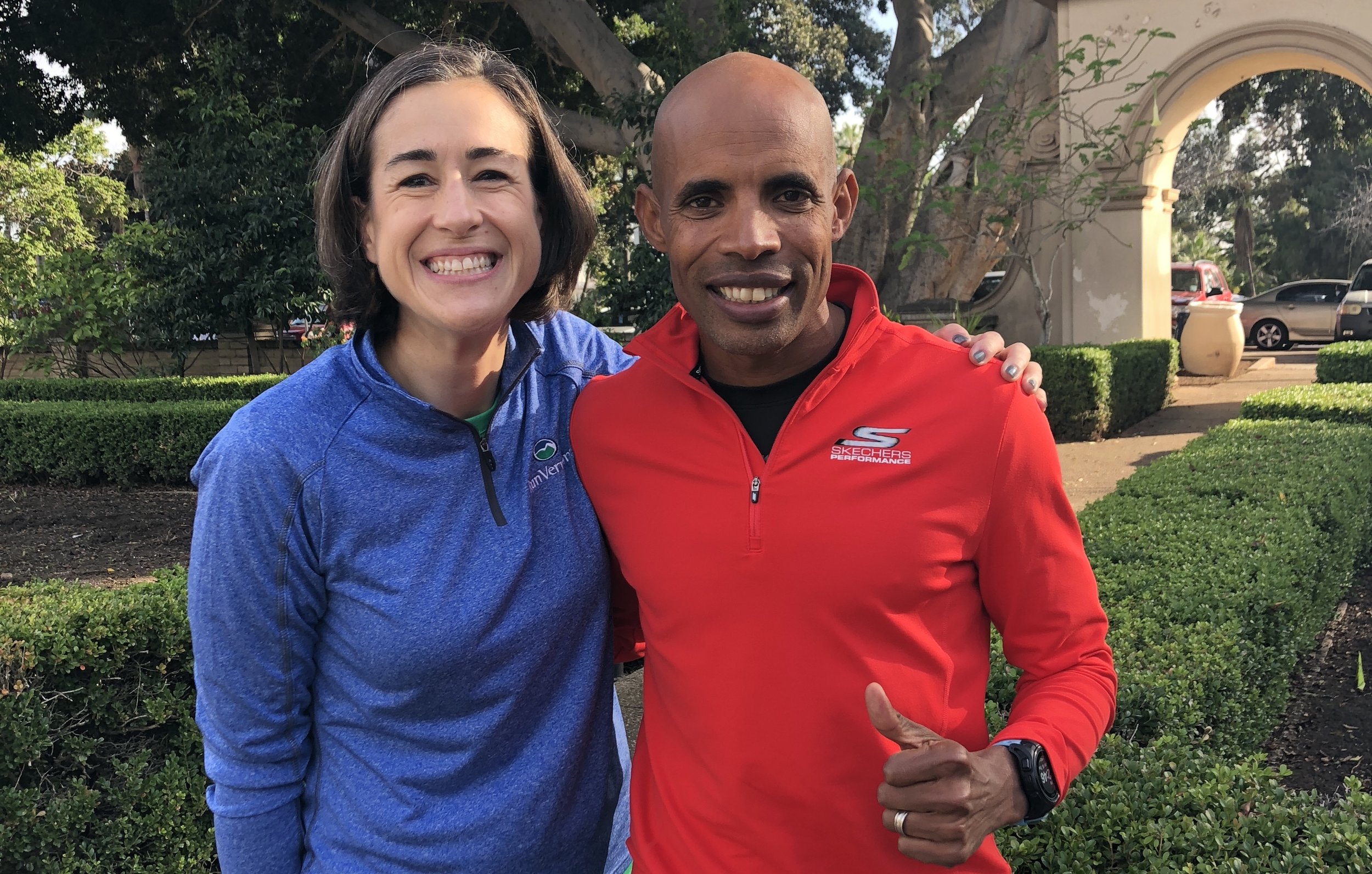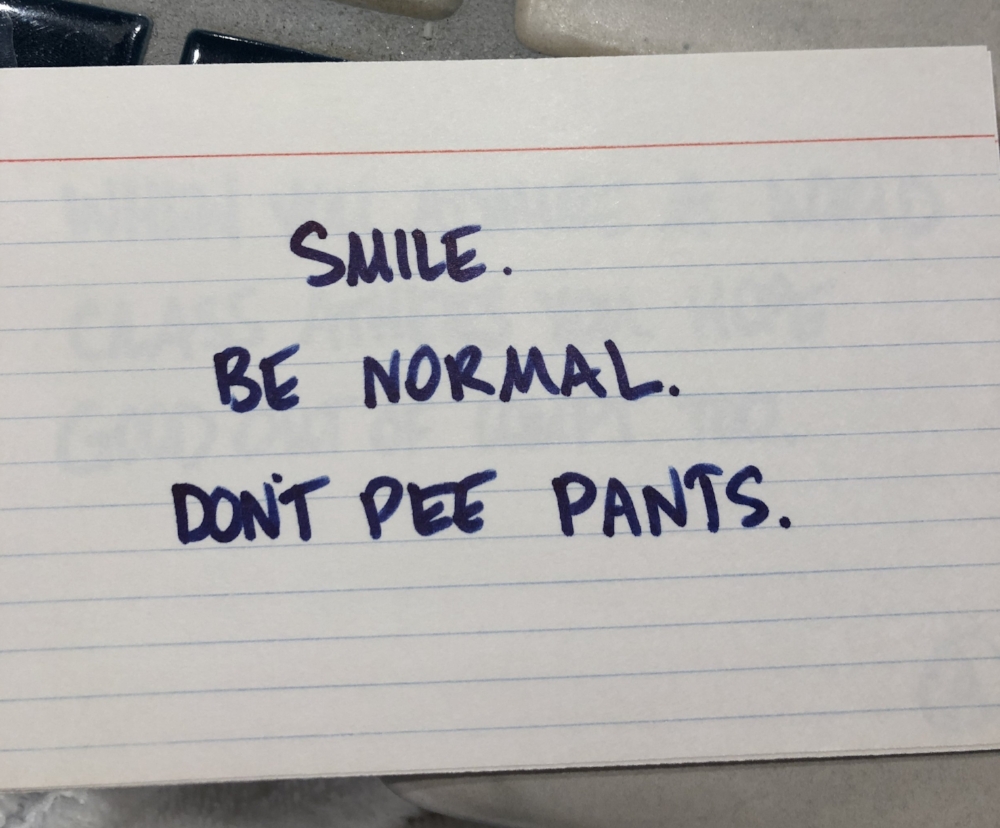Good Fences Make Good Neighbors, Sort Of
This spring, I arrived back in San Diego around the same time that the so-called "caravan" of migrants from Central America also reached the Tijuana-San Diego border crossing. Having fled violence and governments who failed to protect them, these migrants were seeking asylum and their political circumstances had generated publicity, scrutiny and debate. As the summer wore on, they would find themselves at the center of extremely controversial and ever-changing immigration policies that became known by the shorthand "child separation."
But the day before they reached the border, and weeks before people of all political persuasions would throw up their hands in disgust and proclaim the U.S. immigration system "broken," I really wanted to see the border first-hand.
I've spent the last year crossing international borders with ease, the navy blue pleather passport with a golden eagle ensuring my passage. In many of the countries I've visited, people lamented that lack of diplomatic relations (among other factors) barred them from getting a visitor visa to travel freely. The status of being an American in the world confers privileges that I have always been aware of, but our weakening relationships with so many countries has made it easy to imagine a world in which the freedom to travel and be welcomed isn't guaranteed. And now the predicament of these asylum-seekers reinforced that for me.
The San Ysidro border crossing between Tijuana and San Diego is said to be one of the busiest borders in the world: driving north into the US, hours-long wait times are routine, despite 35 lanes to accommodate the traffic. But a couple of miles west of there, the border is an entirely different scene. A tall, slatted metal fence reinforced with chainlink stands in the sand and stretches a hundred yards or more into the crashing surf of the Pacific Ocean.
On the U.S. side, Border Field State Park is in the Tijuana River estuary, a scrubby open space of marshes with a few trails that runs right up to the international border on its southern edge and the coast on its western side. When people stroll or bike the flat dirt trails, they eventually end up at the picnic area close to the fence line. For most of the border in this region, two parallel fence lines undulate with the terrain, with a no man's land in between that's videotaped, scrutinized and patrolled. But right here on the beach, the intensity of the surveillance seems to make it possible for one fence to do the job (plus some caution tape and stern signage).
On the American side, almost no one was out in the big open park on the cloudy, windy day I ventured down there. On the Mexican side, though, the city's development brushes up against the border, where apartment buildings, shops and neighborhoods are easily within view. Families and friends were on the beach on the Mexican side; I saw a few border selfies taken; people visited, laughed, hung out.
The "caravan" that would imminently reach the official border crossing seemed a world away from here. I was felt an awkward irony to be standing alone on the U.S. side of the border, watching through the fence line as people enjoyed an easy afternoon on the Mexican side.
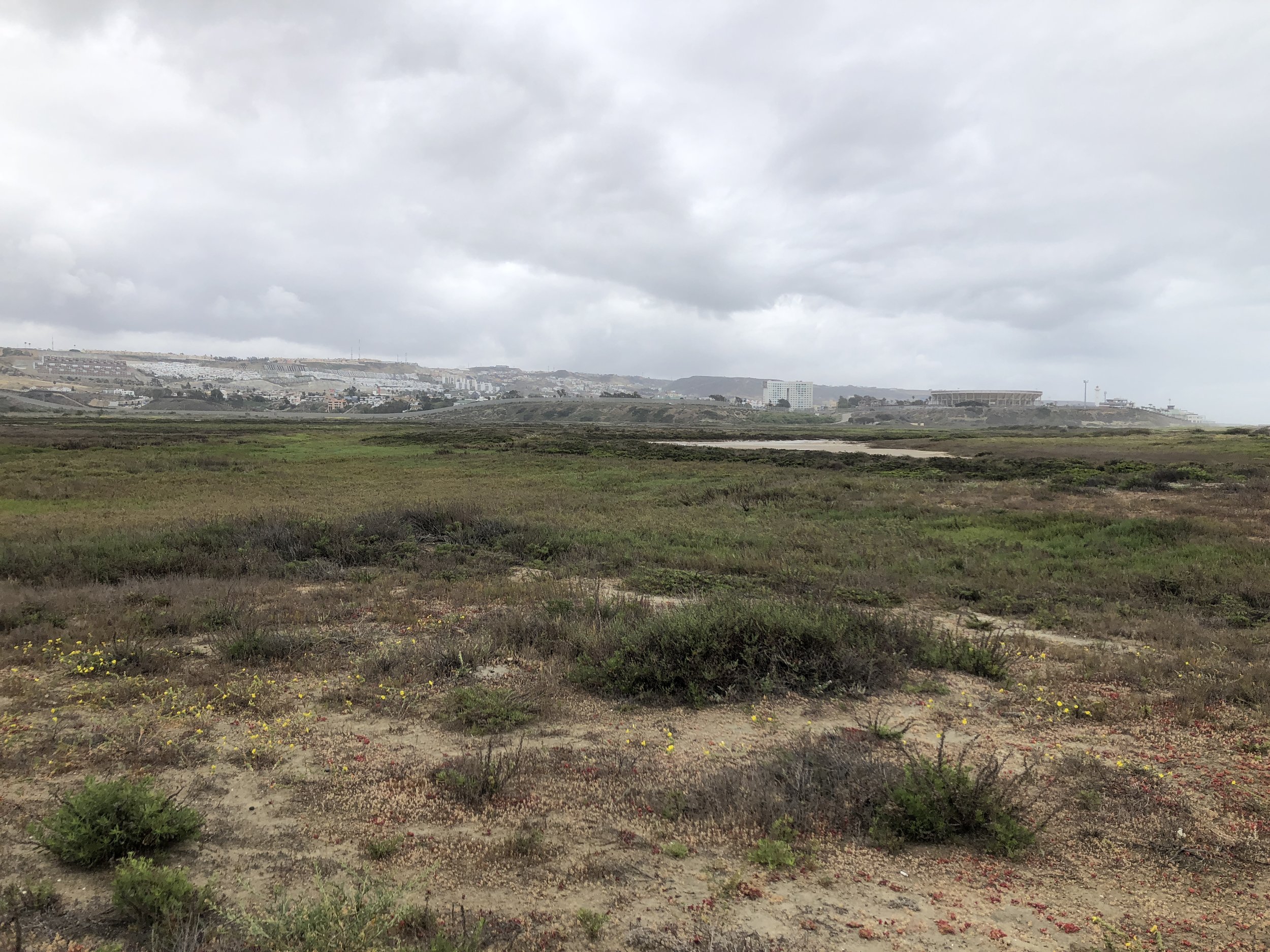
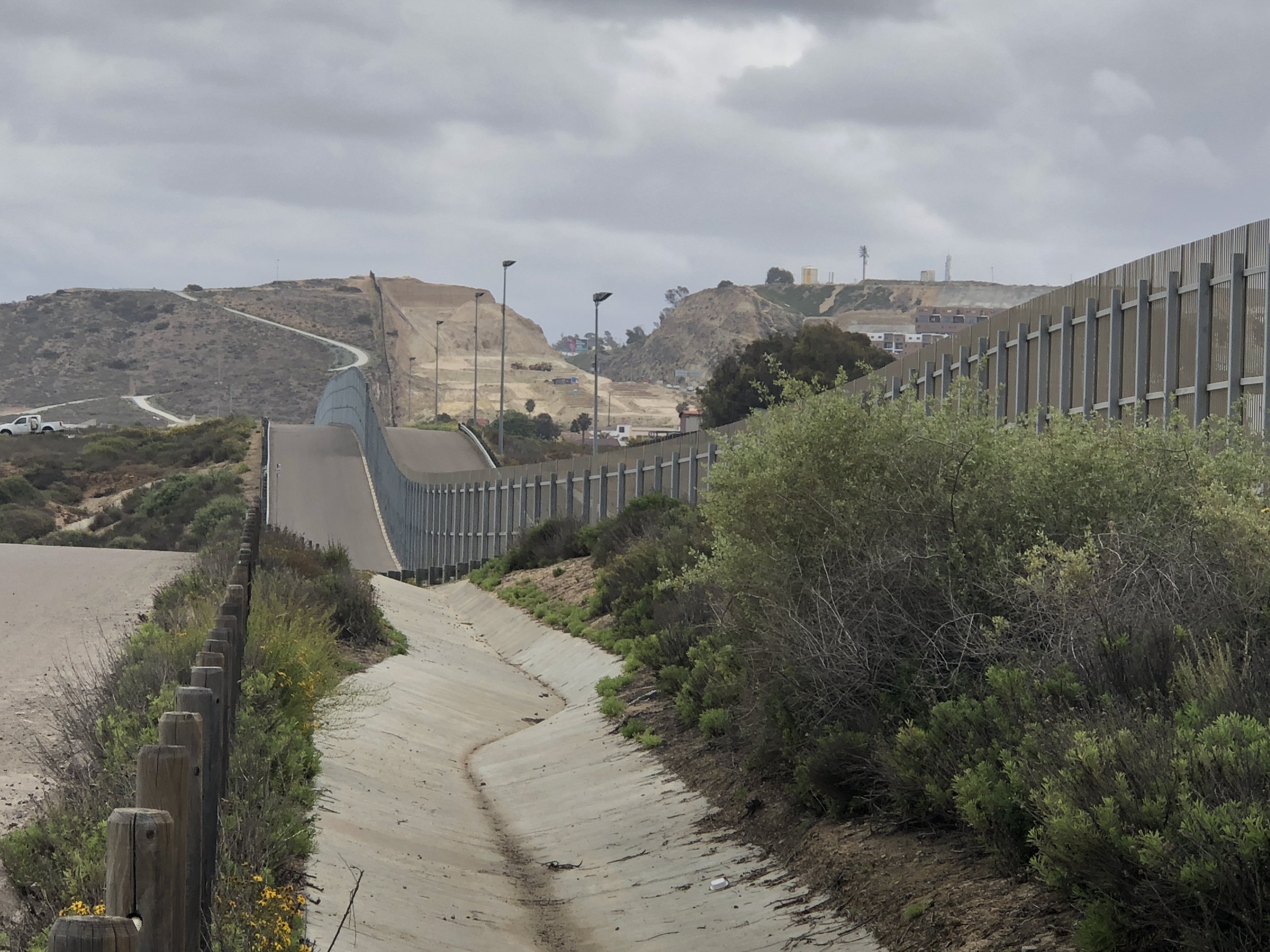
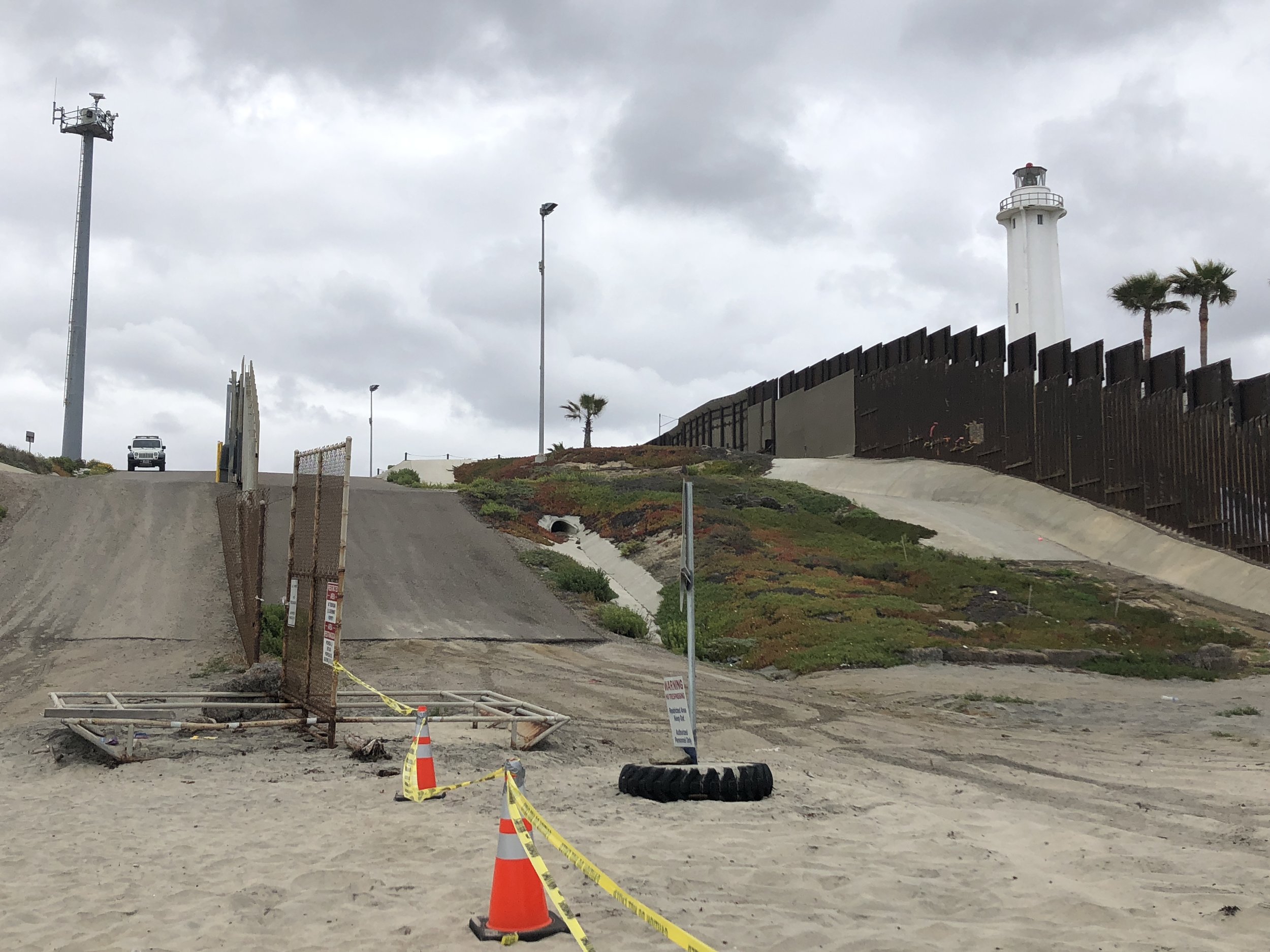
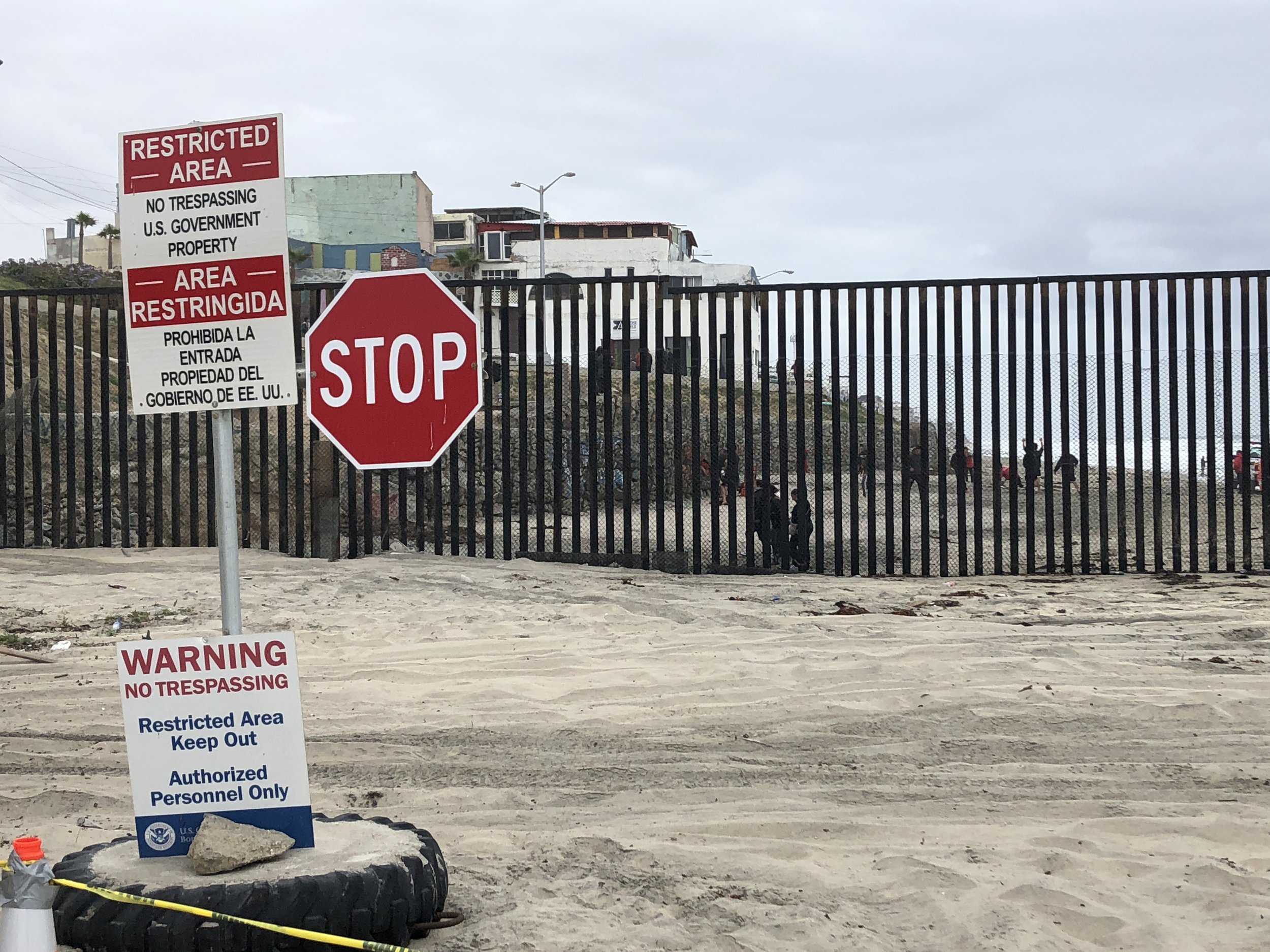

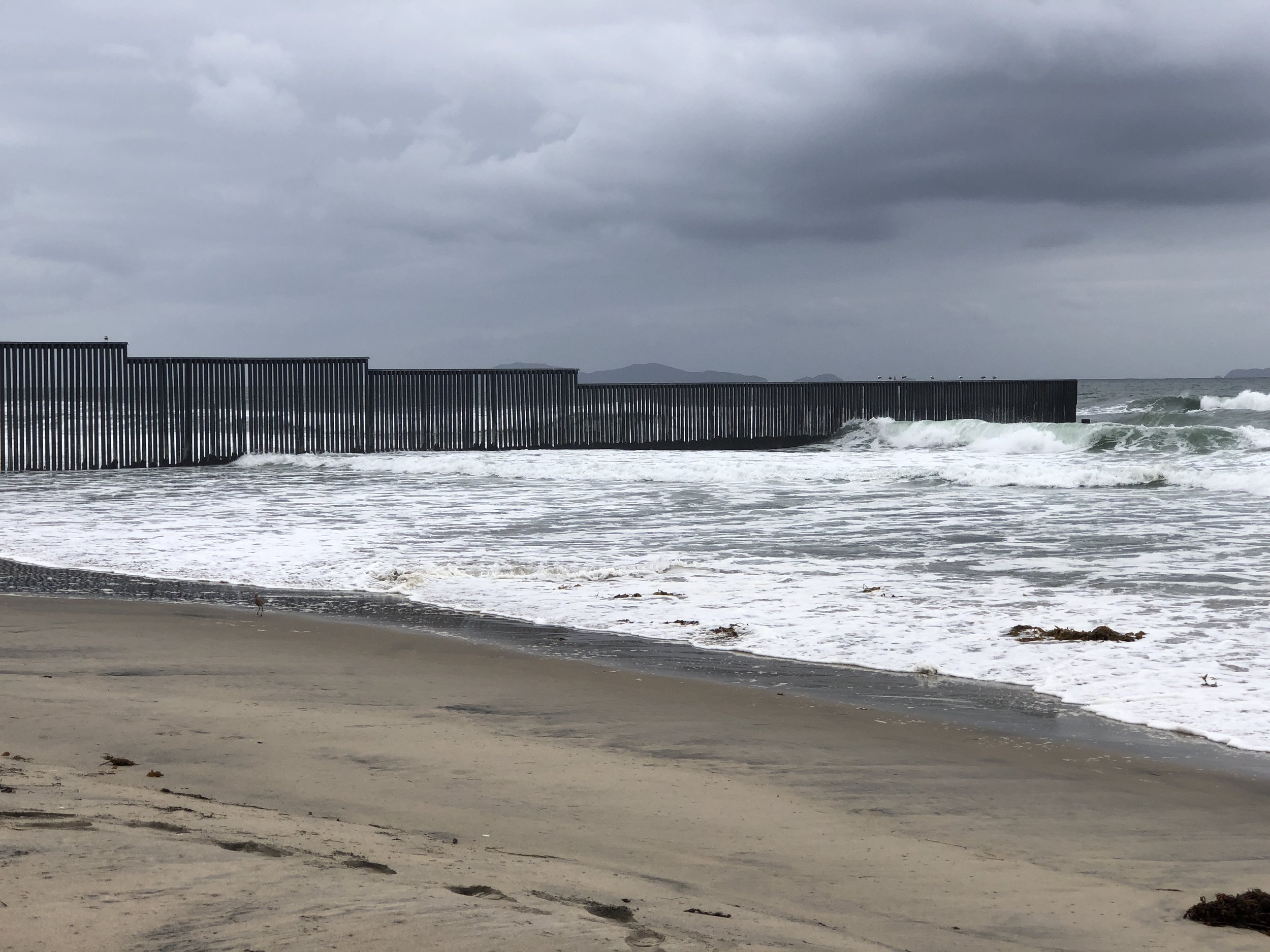
[May 2018: U.S.-Mexico border]

